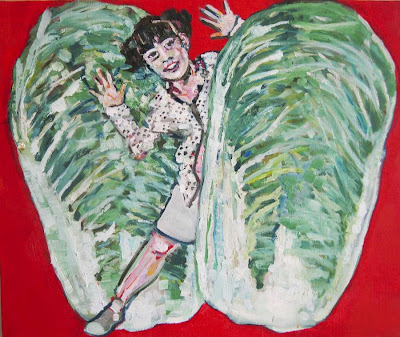 My first horse ride.
My first horse ride. Drying sheets.
Drying sheets. Ariel. Behind him are these wonderfully fake concrete yurts and Han women in Mongolian outfits.
Ariel. Behind him are these wonderfully fake concrete yurts and Han women in Mongolian outfits. A camel owned by the resort.
A camel owned by the resort. Sunset.
Sunset. Prairie girls.
Prairie girls. Redundancy.
Redundancy. Chao in the yurt dining hall.
Chao in the yurt dining hall. Happy Ariel at 乌兰花, or "Black orchid" town, which was our transfer point to reach the grasslands.
Happy Ariel at 乌兰花, or "Black orchid" town, which was our transfer point to reach the grasslands. Chao and I in a moto-rickshaw in Hohhot.
Chao and I in a moto-rickshaw in Hohhot. Hohhot at night. Note the Muslim style domed buildings.
Hohhot at night. Note the Muslim style domed buildings. Mongolian restaurant by Hohhot University.
Mongolian restaurant by Hohhot University. Our guide with an "aobao," or prayer mound, in the grasslands.
Our guide with an "aobao," or prayer mound, in the grasslands. Wild mushroom our guide found.
Wild mushroom our guide found. Chao in front of a Mongolian white stupa. Both Tibetan and Mongolian cultures share this kind of structure.---内蒙古
Chao in front of a Mongolian white stupa. Both Tibetan and Mongolian cultures share this kind of structure.---内蒙古
Inner MongoliaAriel, Chao and I went to Inner Mongolia last weekend to see the grasslands, an endless stretch of rough green and shockingly blue skies. It was one of the most beautiful places I've seen. There is basically nothing at all for miles; no trees, no mountains, no water, just endless varieties of grass and more bizarre insects than I've seen anywhere. Giant crickets that look like hummingbirds when they fly, smooth marble slabs buried under dry earth, rabbit and snake holes. Most startling of all, for a city boy like myself, is the silence, which is almost strangely loud it's so quiet, and the dramatic temperature drop and strong winds at night.
We rode horses, ate a lot of lamb, and met a few Mongolians. One guide spoke excellent Mandarin, but was impatient to teach us a few Mongolian words. The language has very strong constant sounds and seems painful to speak, like the sounds are scraping your vocal cords. We passed by a village like one I'd never seen, made entirely out of rammed earth with beautiful, completely foreign boxy, colorful temples.
Hohhot was a surprisingly unique city. Mid-sized cities in modern China are mostly fashioned completely alike; the train station and long distance bus station are close to one another with most hotels around them, major streets are very wide with tremendous street lamps, skyscrapers are everywhere, giant monolithic Communist structures, the old part of the city is being flattened, etc. However, Hohhot had very Hui minority style structures with minarets and onion domes, all street names in Mongolian script, huge metal sculptures of horseback Mongolian warriors; all somewhat tacky, but at least it had a personality.
I believe average Chinese people view Mongolians in this dramatic, Plains Indian kind of way and enjoy putting on cowboy hats and heading to the grasslands to ride horses and drink sheep's yogurt. It's a lot like Americans' "wild west" fascination; an interest in this noble savage that has been conquered and can be safely approached. The comparison is obvious in city and place names, which are nearly all translated directly from Mongolian script into Mandarin characters, a rare thing in Chinese. Compare that to Mississippi, North Dakota, Miami and countless other American places that are named after tribes or use native languages for naming.





















































